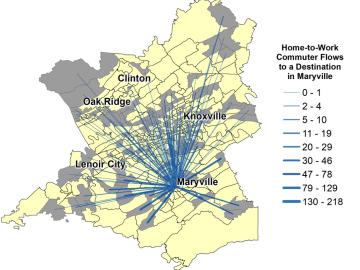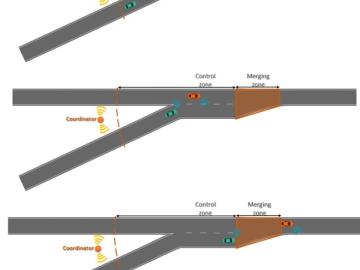
Filter News
Area of Research
News Type
News Topics
- (-) 3-D Printing/Advanced Manufacturing (11)
- (-) Artificial Intelligence (8)
- (-) Big Data (9)
- (-) Bioenergy (1)
- (-) Biomedical (3)
- (-) Microscopy (3)
- (-) Polymers (4)
- (-) Transportation (13)
- Advanced Reactors (5)
- Biology (3)
- Buildings (4)
- Chemical Sciences (5)
- Clean Water (6)
- Composites (3)
- Computer Science (20)
- Critical Materials (3)
- Cybersecurity (1)
- Emergency (1)
- Energy Storage (9)
- Environment (17)
- Fossil Energy (1)
- Fusion (4)
- Grid (5)
- High-Performance Computing (3)
- Isotopes (1)
- ITER (1)
- Machine Learning (8)
- Materials (3)
- Materials Science (15)
- Mathematics (2)
- Mercury (2)
- Molten Salt (4)
- Nanotechnology (5)
- Neutron Science (12)
- Nuclear Energy (13)
- Physics (3)
- Quantum Science (3)
- Security (1)
- Simulation (4)
- Space Exploration (4)
- Summit (3)
Media Contacts

Oak Ridge National Laboratory’s latest Transportation Energy Data Book: Edition 37 reports that the number of vehicles nationwide is growing faster than the population, with sales more than 17 million since 2015, and the average household vehicle travels more than 11,000 miles per year.

Gleaning valuable data from social platforms such as Twitter—particularly to map out critical location information during emergencies— has become more effective and efficient thanks to Oak Ridge National Laboratory.

Oak Ridge National Laboratory scientists have created open source software that scales up analysis of motor designs to run on the fastest computers available, including those accessible to outside users at the Oak Ridge Leadership Computing Facility.

Oak Ridge National Laboratory geospatial scientists who study the movement of people are using advanced machine learning methods to better predict home-to-work commuting patterns.

Oak Ridge National Laboratory scientists studying fuel cells as a potential alternative to internal combustion engines used sophisticated electron microscopy to investigate the benefits of replacing high-cost platinum with a lower cost, carbon-nitrogen-manganese-based catalyst.
![2018-P07635 BL-6 user - Univ of Guelph-6004R_sm[2].jpg 2018-P07635 BL-6 user - Univ of Guelph-6004R_sm[2].jpg](/sites/default/files/styles/list_page_thumbnail/public/2018-P07635%20BL-6%20user%20-%20Univ%20of%20Guelph-6004R_sm%5B2%5D.jpg?itok=hUSyvkP0)
A team of scientists, led by University of Guelph professor John Dutcher, are using neutrons at ORNL’s Spallation Neutron Source to unlock the secrets of natural nanoparticles that could be used to improve medicines.

Thought leaders from across the maritime community came together at Oak Ridge National Laboratory to explore the emerging new energy landscape for the maritime transportation system during the Ninth Annual Maritime Risk Symposium.

Self-driving cars promise to keep traffic moving smoothly and reduce fuel usage, but proving those advantages has been a challenge with so few connected and automated vehicles, or CAVs, currently on the road.

An Oak Ridge National Laboratory-led team used a scanning transmission electron microscope to selectively position single atoms below a crystal’s surface for the first time.

The construction industry may soon benefit from 3D printed molds to make concrete facades, promising lower cost and production time. Researchers at Oak Ridge National Laboratory are evaluating the performance of 3D printed molds used to precast concrete facades in a 42-story buildin...


